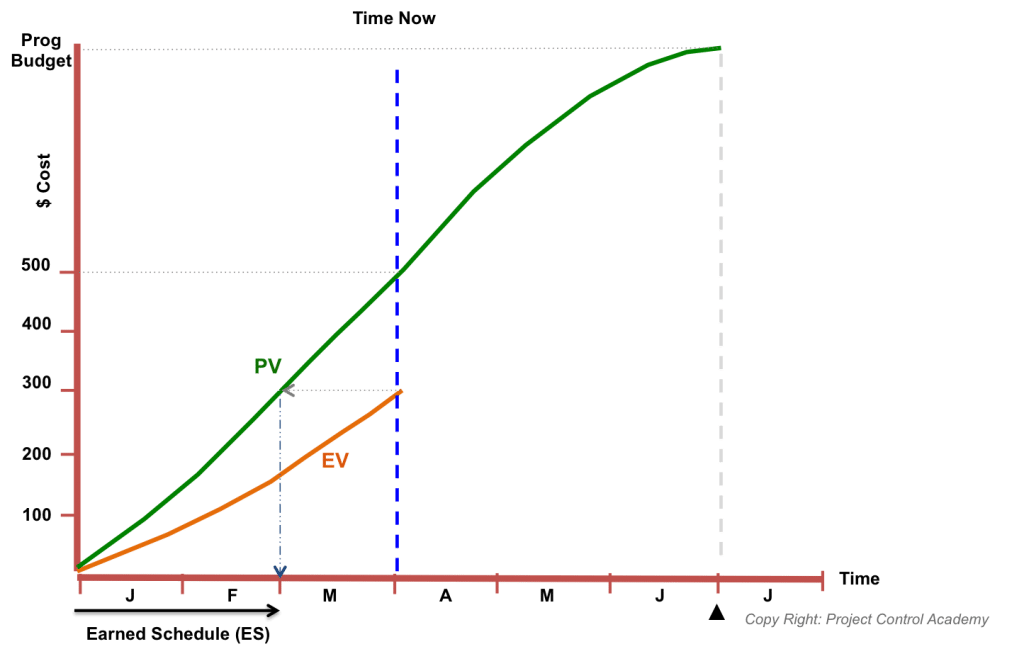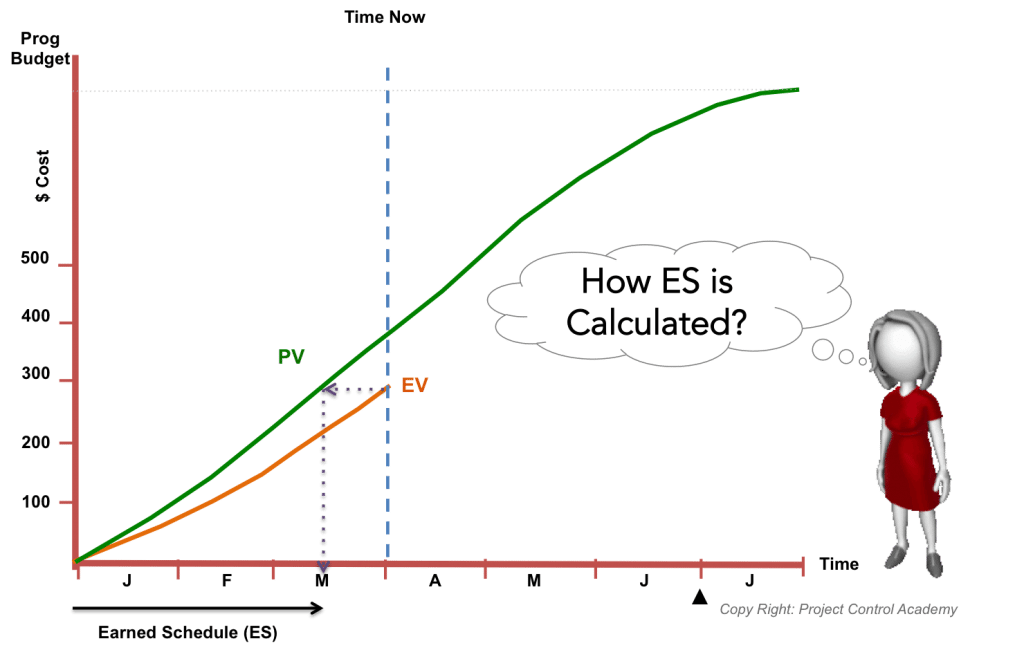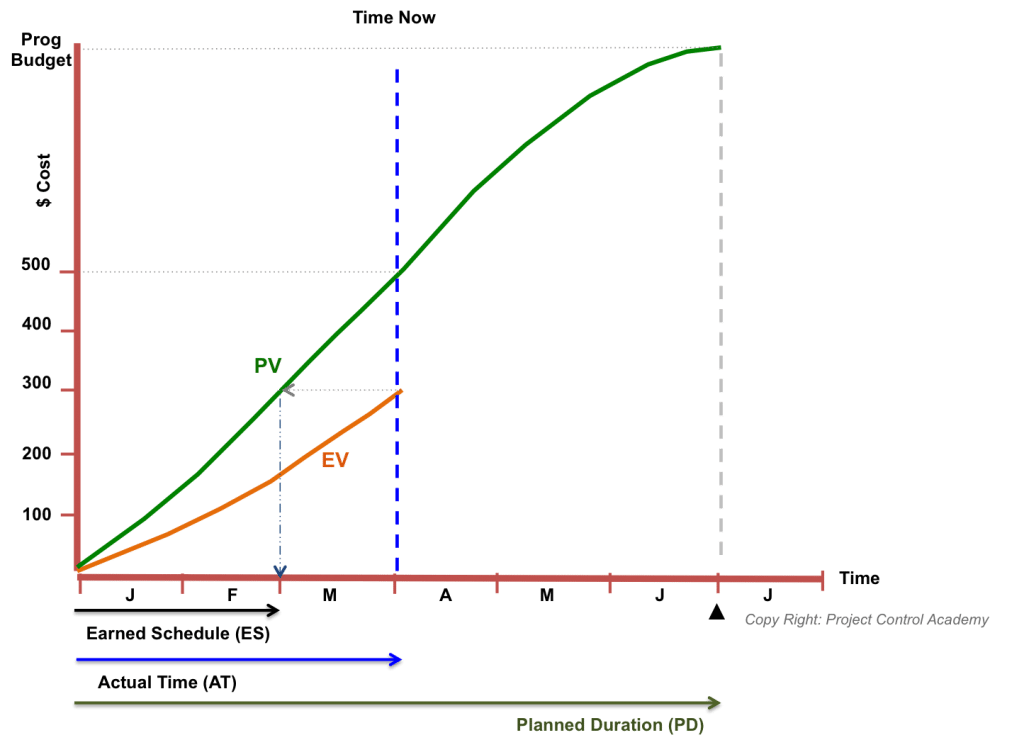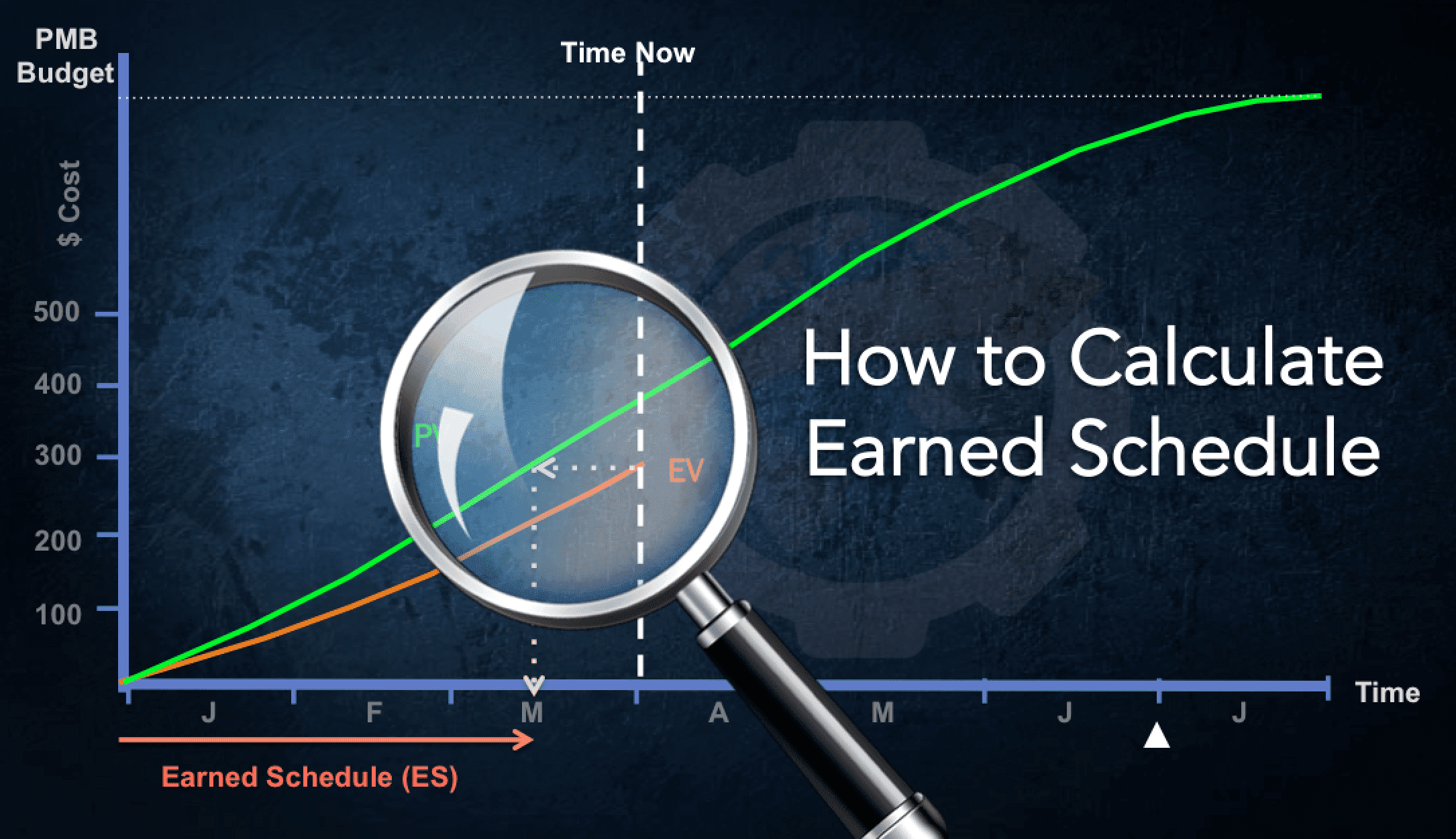In this training, I am going to show you how you can calculate the “Earned Schedule”.
I assume you already know what “Earned Schedule” is. If not, please make sure that you watch another video that I have prepared for you entitled “Earned Schedule- An improvement to EVM Scheduling Metrics.”
To measure Earned Schedule, we need to determine “when” the work was supposed to be earned. In other words, at what point in time was the current Earned Value (EV) should have been occurred?
This is determined by crossing a horizontal line from the current cumulative EV to the PV curve. The intersection of this line with the PV curve is the Earned Schedule.

Therefore, Earned Schedule (ES) is the point in time when the current earned value was to be accomplished. It is the point at which the project PV supposed to be equal to the current EV.
Can you tell what is the Earned Schedule in the graph above?
Yes, it is 2 months!
It was straightforward. Wasn’t it?
However, calculating Earned Schedule is not always as easy as it was shown in this example.
What if the Earned schedule falls in between two periods?

In this case, how do you calculate the Earned Schedule?
Watch this tutorial to learn how to calculate Earned Schedule:
How was the calculation of Earned Schedule?
It might look a bit complex by a quick glance at the formula. However, if you understand how the formula is shaped, you will be fine.
It is a simple math equation-using trigonometry.
Now to determine other metrics using the Earned Schedule concept, you need to know a couple of more terms:
The other parameter is the Actual Time (AT), which is the number of periods executed since the time the project started.
Another metrics is the Planned Duration (PD), which is the “original duration of the project”.

Now we have 3 key elements to assess the schedule status in units of time:
- Earned Schedule (ES)
- Actual Time (AT)
- Planned Duration (PD)
By having these 3 metrics, you can now generate other Earned Schedule indicators and predictors.
The Earned Schedule Indicators & Predictors is covered in another episode of Project Control Mastery.
Have you ever used Earned Schedule in your projects? I’d be interested in hearing your thoughts and comments.
About the Author, Shohreh Ghorbani

Shohreh is a licensed project management professional (PMP) recognized by Project Management Institute (PMI) and holds a Master of Science in Industrial Engineering.
Connect with Shohreh via Facebook, Linkedin, Instagram, YouTube





![[Free 90-min Masterclass] The Ultimate Leadership Recipe for Project Professionals](https://www.projectcontrolacademy.com/wp-content/uploads/2024/08/4-1024x576.jpg)















